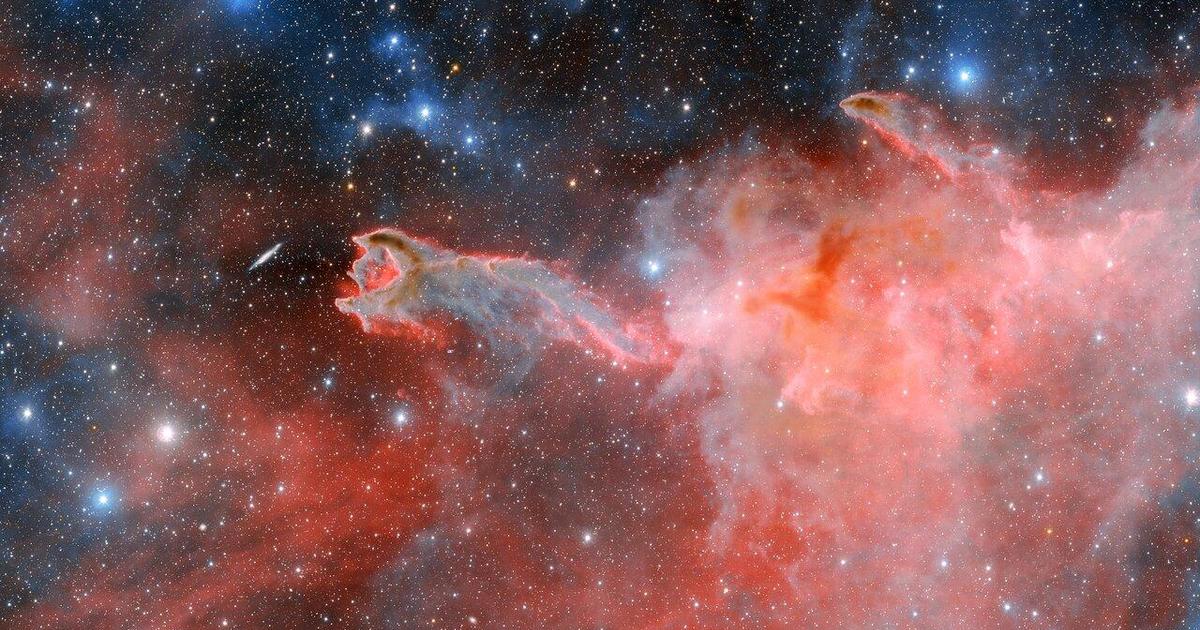NASA launches Lucy probe on 12-year flight to visit eight remote asteroids
NASA's billion-dollar Lucy probe rocketed into space with a pre-dawn launch on Saturday, kicking off a 12-year, 4-billion-mile quest to make close flybys of eight unusual asteroids that represent the preserved building blocks of the solar system.
Known as Trojans, the asteroids circle the sun well beyond the main belt of rocky debris between Mars and Jupiter. They're clustered in two gravitationally bound "swarms" in the same orbit as the giant planet, one group 60 degrees ahead and the other 60 degrees behind.
NASA's Lucy probe, named after the 3.2-million-year-old bones of a celebrated early human ancestor, was launched on a trajectory setting up three velocity-boosting Earth flybys to send it first past an asteroid in the main belt between Mars and Jupiter and then on to five asteroids in one Trojan swarm and two in the other.
"Trojan asteroids lead or follow Jupiter in its orbit by about 60 degrees," said Hal Levison, principal investigator at the Southwest Research Institute. "They're held there by the gravitational effect of Jupiter and the sun. So if you put an object there, early in the solar system's history, it's been stable forever."
"So these things really are the fossils of what planets formed from. We understand planets formed as these things hit each other and grew, and these are the leftovers of that. So if you want to understand where the solar system came from, you have to go to these small bodies."
Lucy's journey began early Saturday with a picture-perfect launch atop a United Launch Alliance Atlas 5 rocket at the Cape Canaveral Space Force Station. The rocket put on a spectacular pre-dawn show, lighting up the sky for miles around as it climbed away from pad 41 atop a brilliant torrent of flaming exhaust.
The launch was timed to coincide with the opening of a 23-day "window" when Earth and the targeted asteroids were in the most favorable positions to permit the eight planned flybys.
To reach the first Trojan swarm, Lucy will need two Earth flybys, in 2022 and 2024, using the planet's gravity to pump up its velocity and send it outward toward the "L4" swarm.
Along the way, in 2025, the probe will make a close flyby of a main belt asteroid named after Donald Johanson, the paleoanthropologist who discovered the Lucy fossils, then the oldest known human ancestor, in 1974.
After that, it's on to the L4 swarm and flybys of the Trojan asteroid Eurybates and its small moon Queta in August 2027 followed by Polymele the next month, Leucus in April 2028 and Orus the following November.
Leaving the L4 group, Lucy will fall back toward the inner solar system for a third Earth gravity assist to send it on to the L5 Trojan swarm on the other side of Jupiter's orbit in 2033 and a flyby of Patroclus and Menoetius, unusual twin asteroids orbiting each other.
"One of the really surprising things about the Trojans is how different they are from one another, particularly with their colors," Levison said. "Some are gray, some are red. ... We think the color indicates different formation locations, and these things were mixed together during the last gasp of planet formation.
"So if you want to understand what this population is telling us about how the planets formed, you need to understand that diversity. And that's what Lucy is intended to do. And we do this through this really amazing trajectory that was part science, part art and part luck."
Luck figures in because the team did not initially realize Lucy would have a chance to inspect the L5 binary pair, Patroclus and Menoetius, when the trajectory was being designed. Later, researchers discovered the two asteroids would happen to be in the vicinity of the spacecraft in 2033.
Lucy is equipped with four primary instruments mounted on a steerable platform.
The Lucy LOng Range Reconnaissance Imager, or L'LORRI, is a telescopic camera capable of detecting a fly at the other end of a football field or a 229-foot-wide crater from a distance of more than 600 miles.
The camera was built by the Johns Hopkins University Applied Physics Laboratory and is a modified version of the instrument aboard the New Horizons probe that captured spectacular images of Pluto during its 2015 flyby.
"L'LORRI is going to provide detail as small as about eight yards across," said Hal Weaver, the camera's principal investigator at APL. "So that's ... even less yardage than you need to get a first down in football. It's just going to be amazing to see these objects at that kind of resolution.
"What are we going to see? Are there mountains, valleys, pits, mesas? Who knows? I'm sure we're going to be surprised."
Lucy also is equipped with a combination multi-spectral visible light camera and infrared spectrometer known as L'RALPH, built by NASA's Goddard Space Flight Center, that will map the surfaces of the targeted asteroids to search for signs of organic compounds and other tell-tale chemicals.
Arizona State University provided a third instrument, the Lucy Thermal Emission Spectrometer, or L'TES, that will act as a remote thermometer, measuring the temperatures of an asteroid's surface to help determine its physical properties.
A specialized terminal tracking camera, or T2CAM, will be used to help precisely navigate over the long journey and track Lucy's asteroid targets, taking wide-angle images to precisely define their shapes.
Those data, along with subtle changes in the radio signals from Lucy as an asteroid's feeble gravity affects the spacecraft's velocity, will enable researchers to determine the mass and density of the targets.
"We're flying by (the targets) at nearly 15,000 miles per hour ... and the gravitational pull from the Trojan asteroids will change that velocity by about one-hundredth of a mile per hour," said Cathy Olkin, deputy principal investigator at the Southwest Research Institute.
"But we'll be able to detect ... the change in the (radio signal's) Doppler frequency as we fly by. So that's how we're going to learn about the mass of the Trojan asteroids."
The Trojan asteroids orbit about five times farther from the sun than Earth. To collect enough solar energy to power Lucy and its instruments when it's 530 million miles from the sun, the spacecraft is equipped with two circular solar arrays 24 feet across that unfold like Chinese fans on either side of the spacecraft's body.
NASA's Juno probe, currently orbiting Jupiter, is the first to operate at that distance with solar power in place of nuclear generators. But Lucy's trajectory will carry it even farther from the sun than Juno as it loops through the Trojan swarms.
"When we're near Earth, those wings have about 18,000 watts of power, so that would be equivalent to powering up my house and a couple of my neighbors," said Katie Oakman, an engineer at spacecraft-builder Lockheed Martin Space.
"However, when we fly out to the Jupiter Trojan asteroids, we only have about 500 watts of power. So that would only light a few light bulbs in my living room. However, what's really cool about our instruments is they only need about 82 watts of power to collect science during our encounters."








